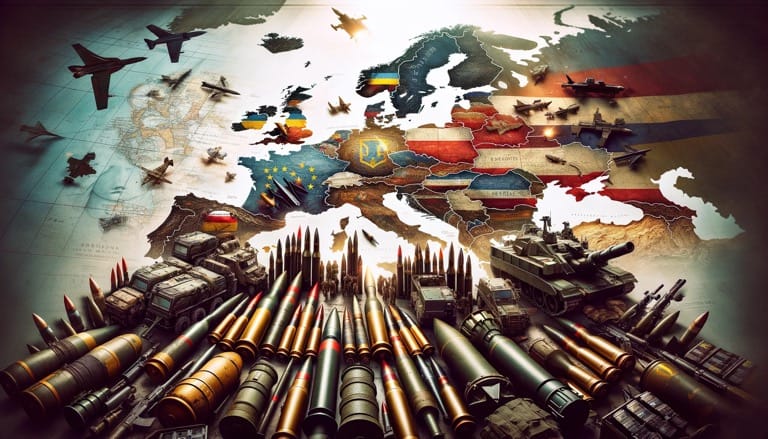Europe's Challenge in Arming Ukraine: A Test of Resolve and Resources
January 17, 2024 As the conflict between Ukraine and Russia enters its third year, a crucial question emerges: Can Europe arm Ukraine effectively, or even fully support itself militarily? The economic disparity between Russia and Ukraine is stark, with Russia’s economy nearly 14 times larger. However, the collective might

January 17, 2024
As the conflict between Ukraine and Russia enters its third year, a crucial question emerges: Can Europe arm Ukraine effectively, or even fully support itself militarily? The economic disparity between Russia and Ukraine is stark, with Russia’s economy nearly 14 times larger. However, the collective might of Ukraine's allies, primarily in Europe and the United States, holds the potential to change the tide of the war.
Despite the overwhelming resources of Ukraine's allies, the war's momentum has been shifting slowly in Russia's favor. This shift is evident in the struggle for artillery ammunition. At the peak of Ukraine's summer counter-offensive, Ukrainian forces used about 7,000 artillery shells daily, surpassing Russian usage. In a concerning reversal, Ukrainian forces now face a rationing of 2,000 shells per day, while Russian forces are firing five times that amount.
The delivery of aid from America and the European Union to Ukraine faces significant hurdles. In the United States, a partisan deadlock over immigration has stalled $61 billion in military assistance. Meanwhile, in Brussels, €50 billion ($54 billion) in financial support is impeded by the veto of Hungary's pro-Russian leader, Viktor Orban. Despite optimism for the release of aid at a forthcoming EU summit, concerns persist about American partisanship and Donald Trump's hostility potentially affecting Pentagon support. This situation could render Ukraine predominantly reliant on European aid.
European Union countries have stepped up their commitment, with total military aid surpassing America’s €44 billion. Germany has been a major contributor, providing more than €17 billion, and Nordic countries have also made significant contributions. However, the distribution of aid across EU countries is inconsistent. France, for instance, has contributed a relatively modest €0.5 billion. Despite the EU's pledge to supply Ukraine with 1 million artillery shells over a year, only 480,000 have been delivered to date, although the EU maintains its commitment to fulfilling the total.
NATO's Support and Procurement Agency has announced a collaborative effort among EU members to purchase 1,000 Patriot air-defense missiles, valued at around €5 billion. While NATO cannot directly send lethal aid to Ukraine, this initiative allows member countries to reallocate their air-defense assets to Ukraine. Additionally, the EU's ASAP (Act in Support of Ammunition Production) program, launched in October, has allocated €500 million to increase shell production, though its impact will take time to materialize.
Rheinmetall, a leading European defense manufacturer, has emerged as a proactive supporter, planning to ramp up annual production of 700,000 artillery rounds by the end of 2024 and establishing production and maintenance facilities in Ukraine for armored vehicles, primarily financed by Germany.
Nico Lange, a former advisor to the German defense ministry, indicates that for Europe's largest missile manufacturer, MBDA, to establish new factories, long-term government commitments are necessary. If investments were made promptly, production could begin by 2026.
In summary, Europe faces a significant challenge in sustaining support for Ukraine, particularly if American assistance diminishes. The situation underscores the complexities of military aid and geopolitical dynamics in the ongoing conflict and raises questions about Europe's capacity to support its allies and itself in times of crisis.




